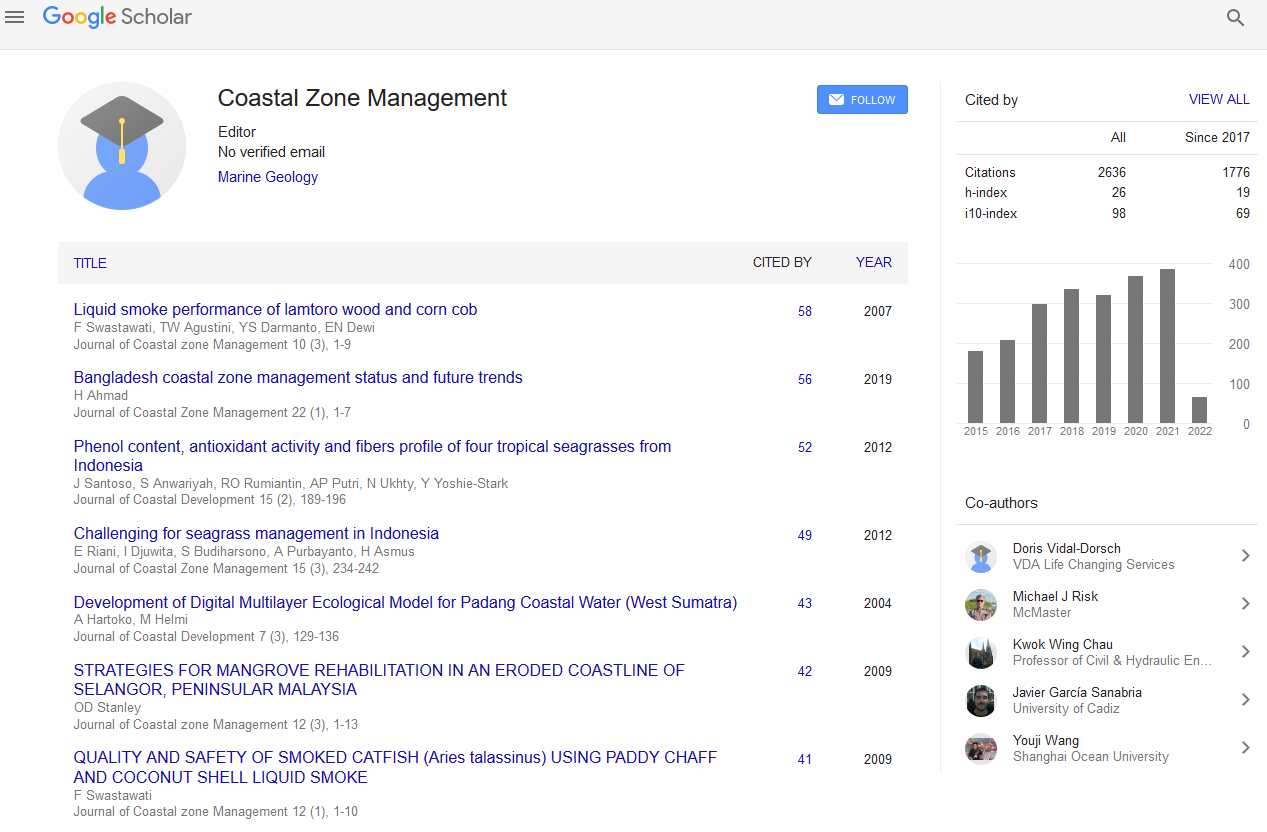Indexed In
- SafetyLit
- RefSeek
- Hamdard University
- EBSCO A-Z
- OCLC- WorldCat
- Publons
Useful Links
Share This Page
Journal Flyer

Open Access Journals
- Agri and Aquaculture
- Biochemistry
- Bioinformatics & Systems Biology
- Business & Management
- Chemistry
- Clinical Sciences
- Engineering
- Food & Nutrition
- General Science
- Genetics & Molecular Biology
- Immunology & Microbiology
- Medical Sciences
- Neuroscience & Psychology
- Nursing & Health Care
- Pharmaceutical Sciences
Abstract
Mitigation Measures for Gaza Coastal Erosion
Mazen Abualtayef, Ahmed Abu Foul, Said Ghabayen, Abdel Fattah Abd Rabou, Ahmed Khaled Seif, Omar Matar
Coastal erosion is an ongoing hazard affecting Gaza beach, but is worsening due to a wide range of human
activities such as the construction of Gaza fishing harbor in 1994-1998. The net annual alongshore sediment
transport is about 190×103 m3, but can vary significantly depending on the severity of winter storms.
According to the observed wave heights and directions, the net waves are cross-shore, therefore vast
quantities of sediments may transfer to deep sea. The main objective of this study is to mitigate the erosion
problem of Gaza coast.
Change detection analysis was used to compute the spatial and temporal change of Gaza shoreline between
1972 and 2010. The results show negative rates in general, which means that the erosion was the
predominant process. Gaza fishing harbor caused a serious damage to the Beach Camp shoreline.
Consequently, several mitigation measures were considered in this study, which are: relocation of Gaza
fishing harbor to offshore, groins, detached breakwaters, wide-crested submerged breakwaters and beach
nourishment. Several numerical model tests associated with coastal structures are conducted to investigate
the influence on morphodynamics.
The results show that the relocation of the harbor is the best alternative to stop trapping of the sediments. If
for any reason the relocation was not carried out, the wide-crested submerged breakwater alternative is an
effective structure for preventing sandy beach erosion. The artificial reef type of submerged breakwaters
with beach nourishment is recommended for Gaza beach, because it is an environmentally friendly and
improving the ecosystem of marine life.

